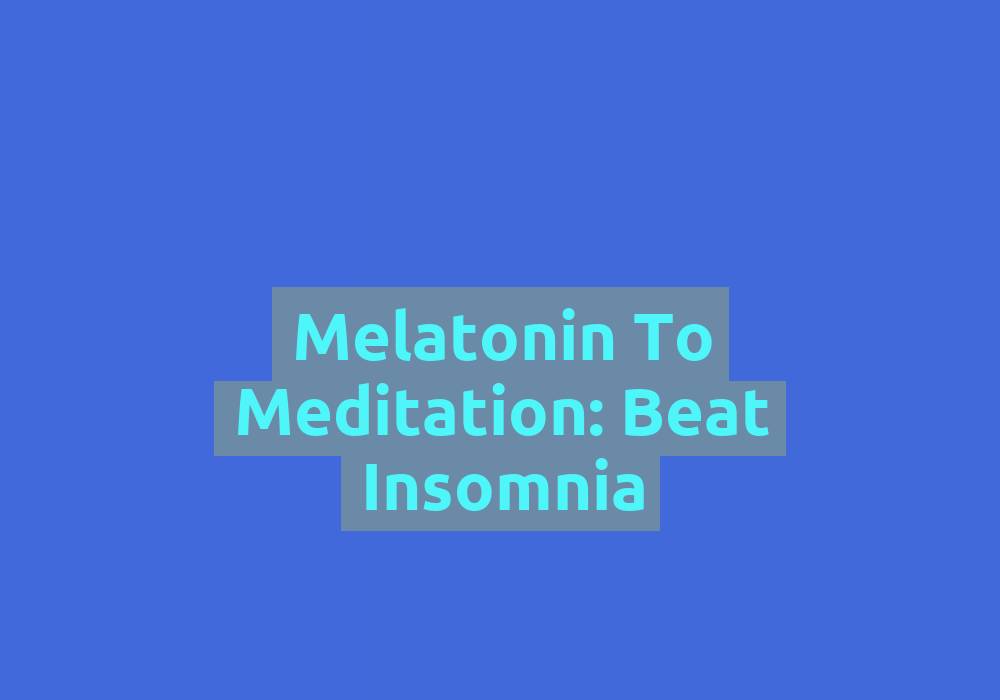
Stress is a universal experience that affects everyone at some point in their lives. Whether it stems from work pressures, personal issues, or everyday challenges, feeling overwhelmed can take a toll on our mental and physical well-being. However, with the right tools and strategies, it’s possible to transform stress into success. In this article, we will explore various tips and tricks that can help you navigate the journey from stress to success.
Understanding Stress
Before we delve into the ways to combat stress, it’s essential to understand what stress actually is. Stress is the body’s natural response to any demand or pressure placed upon it. It can be triggered by both positive and negative events, and the effects can vary from person to person.
Stress can manifest in various ways, such as physical symptoms (headaches, muscle tension) or emotional symptoms (anxiety, irritability). It’s important to recognize the signs of stress in order to address it effectively. By understanding the underlying causes and triggers of stress, you can develop a personalized approach to managing and reducing it.
Identifying Sources of Stress
To effectively manage stress, it’s crucial to identify the sources that are causing it. Take a moment to reflect on the aspects of your life that may be contributing to your stress levels. These can include work-related responsibilities, financial concerns, relationship issues, or even personal expectations.
By pinpointing the specific sources of stress, you can gain clarity and focus on finding targeted solutions. Make a list of the stressors in your life and rank them in order of significance. This exercise will help you prioritize and tackle each stressor systematically.
Developing a Stress Management Plan
Once you have identified the sources of stress, it’s time to develop a stress management plan. This plan will serve as your roadmap to success by minimizing stress and maximizing productivity. Here are some tips to help you create an effective stress management plan:
-
Set Realistic Goals: Break down your long-term goals into smaller, manageable tasks. This will help you avoid feeling overwhelmed and allow you to make progress in a more structured manner. When setting goals, it’s important to be realistic and consider your current circumstances and resources.
-
Prioritize Tasks: Determine which tasks are most important and tackle them first. This will give you a sense of accomplishment and prevent procrastination, which can lead to increased stress levels. Prioritizing tasks also involves understanding your own limitations and not overcommitting yourself.
-
Practice Time Management: Create a schedule or a to-do list to help you stay organized and focused. By allocating specific time slots for different tasks, you can better manage your time and reduce stress associated with feeling rushed or overwhelmed. Time management techniques, such as the Pomodoro Technique, can also be helpful in increasing productivity and reducing stress.
-
Take Breaks: Incorporate short breaks into your routine to give yourself time to recharge. Engaging in activities you enjoy during these breaks can help reduce stress and increase overall well-being. Whether it’s going for a walk, listening to music, or practicing mindfulness, taking regular breaks is essential for maintaining a healthy work-life balance.
-
Delegate When Possible: If you find yourself overwhelmed with tasks, consider delegating some responsibilities to others. This will not only lighten your workload but also provide an opportunity for others to contribute and grow. Delegating tasks effectively requires clear communication, trust, and the ability to let go of perfectionism.
By implementing these strategies, you can create a stress management plan that suits your individual needs and helps you navigate through challenging times more effectively.
Effective Stress-Relief Techniques
While managing stress is important, practicing stress-relief techniques is equally crucial. These techniques can help you relax, rejuvenate, and maintain a positive mindset. Here are some effective stress-relief techniques to consider:
1. Exercise and Physical Activity
Regular exercise has been proven to be an effective stress reliever. Engaging in physical activity not only helps reduce stress hormones but also releases endorphins, which are natural mood enhancers. Whether it’s going for a run, practicing yoga, or participating in team sports, find an activity that suits you and make it a part of your routine.
In addition to the physical benefits, exercise can also provide a mental break from stress. It allows you to shift your focus away from your worries and immerse yourself in the present moment. Choose activities that you enjoy and that align with your fitness level and preferences.
2. Mindfulness and Meditation
Mindfulness and meditation are powerful practices that can help calm the mind and reduce stress. By focusing on the present moment and practicing deep breathing techniques, you can gain clarity, improve focus, and enhance overall well-being. Incorporate mindfulness exercises and meditation into your daily routine to experience the benefits firsthand.
There are various mindfulness techniques you can try, such as body scans, mindful eating, or guided meditations. Find a quiet and comfortable space where you can dedicate a few minutes each day to practice mindfulness. Over time, you will develop a greater sense of self-awareness and the ability to manage stress more effectively.
3. Healthy Lifestyle Choices
Maintaining a healthy lifestyle can significantly reduce your stress levels. Ensure you are getting enough sleep, eating a balanced diet, and staying hydrated. Lack of sleep and poor nutrition can exacerbate stress and make it more difficult to cope with daily challenges.
Incorporate stress-reducing foods into your diet, such as fruits and vegetables, whole grains, and foods rich in omega-3 fatty acids. These nutrients can support your body’s ability to handle stress and promote overall well-being. Additionally, practicing good sleep hygiene, such as establishing a regular sleep schedule and creating a relaxing bedtime routine, can improve your sleep quality and reduce stress.
4. Social Support and Connection
Having a strong support system can make a world of difference when it comes to managing stress. Surround yourself with positive, supportive individuals who can offer guidance, encouragement, and a listening ear. Engage in social activities, join clubs or groups with similar interests, and cultivate meaningful relationships. Sharing your thoughts and feelings with others can help alleviate stress and provide a sense of belonging.
In addition to personal connections, consider seeking professional help if needed. A therapist or counselor can provide valuable insights and strategies for coping with stress. They can offer a safe space for you to explore your emotions and develop effective coping mechanisms.
5. Relaxation Techniques
Incorporate relaxation techniques into your daily routine to counteract stress. Some popular techniques include deep breathing exercises, progressive muscle relaxation, aromatherapy, and listening to calming music. Experiment with different techniques and find what works best for you. Making time for relaxation will help you unwind and recharge, leading to increased productivity and success.
Seeking Professional Help
While self-help techniques are beneficial for managing stress, it’s important to recognize when professional help may be necessary. If your stress levels are significantly impacting your daily life, relationships, or overall well-being, consider reaching out to a mental health professional. They can provide guidance, support, and additional tools to help you overcome stress and achieve success.
Remember, stress is a normal part of life, but it doesn’t have to define you. By implementing these tips and tricks into your routine, you can transform stress into success and lead a healthier, more fulfilling life. So, take charge of your stress management plan, prioritize self-care, and watch as your journey from stress to success unfolds.
The complete article in markdown format:
“`
Stress is a universal experience that affects everyone at some point in their lives. Whether it stems from work pressures, personal issues, or everyday challenges, feeling overwhelmed can take a toll on our mental and physical well-being. However, with the right tools and strategies, it’s possible to transform stress into success. In this article, we will explore various tips and tricks that can help you navigate the journey from stress to success.
Understanding Stress
Before we delve into the ways to combat stress, it’s essential to understand what stress actually is. Stress is the body’s natural response to any demand or pressure placed upon it. It can be triggered by both positive and negative events, and the effects can vary from person to person.
Stress can manifest in various ways, such as physical symptoms (headaches, muscle tension) or emotional symptoms (anxiety, irritability). It’s important to recognize the signs of stress in order to address it effectively. By understanding the underlying causes and triggers of stress, you can develop a personalized approach to managing and reducing it.
Identifying Sources of Stress
To effectively manage stress, it’s crucial to identify the sources that are causing it. Take a moment to reflect on the aspects of your life that may be contributing to your stress levels. These can include work-related responsibilities, financial concerns, relationship issues, or even personal expectations.
By pinpointing the specific sources of stress, you can gain clarity and focus on finding targeted solutions. Make a list of the stressors in your life and rank them in order of significance. This exercise will help you prioritize and tackle each stressor systematically.
Developing a Stress Management Plan
Once you have identified the sources of stress, it’s time to develop a stress management plan. This plan will serve as your roadmap to success by minimizing stress and maximizing productivity. Here are some tips to help you create an effective stress management plan:
-
Set Realistic Goals: Break down your long-term goals into smaller, manageable tasks. This will help you avoid feeling overwhelmed and allow you to make progress in a more structured manner. When setting goals, it’s important to be realistic and consider your current circumstances and resources.
-
Prioritize Tasks: Determine which tasks are most important and tackle them first. This will give you a sense of accomplishment and prevent procrastination, which can lead to increased stress levels. Prioritizing tasks also involves understanding your own limitations and not overcommitting yourself.
-
Practice Time Management: Create a schedule or a to-do list to help you stay organized and focused. By allocating specific time slots for different tasks, you can better manage your time and reduce stress associated with feeling rushed or overwhelmed. Time management techniques, such as the Pomodoro Technique, can also be helpful in increasing productivity and reducing stress.
-
Take Breaks: Incorporate short breaks into your routine to give yourself time to recharge. Engaging in activities you enjoy during these breaks can help reduce stress and increase overall well-being. Whether it’s going for a walk, listening to music, or practicing mindfulness, taking regular breaks is essential for maintaining a healthy work-life balance.
-
Delegate When Possible: If you find yourself overwhelmed with tasks, consider delegating some responsibilities to others. This will not only lighten your workload but also provide an opportunity for others to contribute and grow. Delegating tasks effectively requires clear communication, trust, and the ability to let go of perfectionism.
By implementing these strategies, you can create a stress management plan that suits your individual needs and helps you navigate through challenging times more effectively.
Effective Stress-Relief Techniques
While managing stress is important, practicing stress-relief techniques is equally crucial. These techniques can help you relax, rejuvenate, and maintain a positive mindset. Here are some effective stress-relief techniques to consider:
1. Exercise and Physical Activity
Regular exercise has been proven to be an effective stress reliever. Engaging in physical activity not only helps reduce stress hormones but also releases endorphins, which are natural mood enhancers. Whether it’s going for a run, practicing yoga, or participating in team sports, find an activity that suits you and make it a part of your routine.
In addition to the physical benefits, exercise can also provide a mental break from stress. It allows you to shift your focus away from your worries and immerse yourself in the present moment. Choose activities that you enjoy and that align with your fitness level and preferences.
2. Mindfulness and Meditation
Mindfulness and meditation are powerful practices that can help calm the mind and reduce stress. By focusing on the present moment and practicing deep breathing techniques, you can gain clarity, improve focus, and enhance overall well-being. Incorporate mindfulness exercises and meditation into your daily routine to experience the benefits firsthand.
There are various mindfulness techniques you can try, such as body scans, mindful eating, or guided meditations. Find a quiet and comfortable space where you can dedicate a few minutes each day to practice mindfulness. Over time, you will develop a greater sense of self-awareness and the ability to manage stress more effectively.
3. Healthy Lifestyle Choices
Maintaining a healthy lifestyle can significantly reduce your stress levels. Ensure you are getting enough sleep, eating a balanced diet, and staying hydrated. Lack of sleep and poor nutrition can exacerbate stress and make it more difficult to cope with daily challenges.
Incorporate stress-reducing foods into your diet, such as fruits and vegetables, whole grains, and foods rich in omega-3 fatty acids. These nutrients can support your body’s ability to handle stress and promote overall well-being. Additionally, practicing good sleep hygiene, such as establishing a regular sleep schedule and creating a relaxing bedtime routine, can improve your sleep quality and reduce stress.
4. Social Support and Connection
Having a strong support system can make a world of difference when it comes to managing stress. Surround yourself with positive, supportive individuals who can offer guidance, encouragement, and a listening ear. Engage in social activities, join clubs or groups with similar interests, and cultivate meaningful relationships. Sharing your thoughts and feelings with others can help alleviate stress and provide a sense of belonging.
In addition to personal connections, consider seeking professional help if needed. A therapist or counselor can provide valuable insights and strategies for coping with stress. They can offer a safe space for you to explore your emotions and develop effective coping mechanisms.
5. Relaxation Techniques
Incorporate relaxation techniques into your daily routine to counteract stress. Some popular techniques include deep breathing exercises, progressive muscle relaxation, aromatherapy, and listening to calming music. Experiment with different
FAQ
Q: What is stress?
A: Stress is the body’s natural response to any demand or pressure placed upon it. It can be triggered by both positive and negative events, and the effects can vary from person to person.
Q: How can I identify the sources of stress in my life?
A: Take a moment to reflect on the aspects of your life that may be contributing to your stress levels. These can include work-related responsibilities, financial concerns, relationship issues, or personal expectations. Making a list of stressors and ranking them in order of significance can help you prioritize and tackle each stressor systematically.
Q: What are some tips for developing a stress management plan?
A: Here are some tips to help you create an effective stress management plan:
- Set realistic goals
- Prioritize tasks
- Practice time management
- Take breaks
- Delegate when possible
Q: What are some effective stress-relief techniques?
A: Some effective stress-relief techniques include:
- Regular exercise and physical activity
- Mindfulness and meditation
- Maintaining a healthy lifestyle
- Seeking social support and connection
- Incorporating relaxation techniques into your daily routine






















